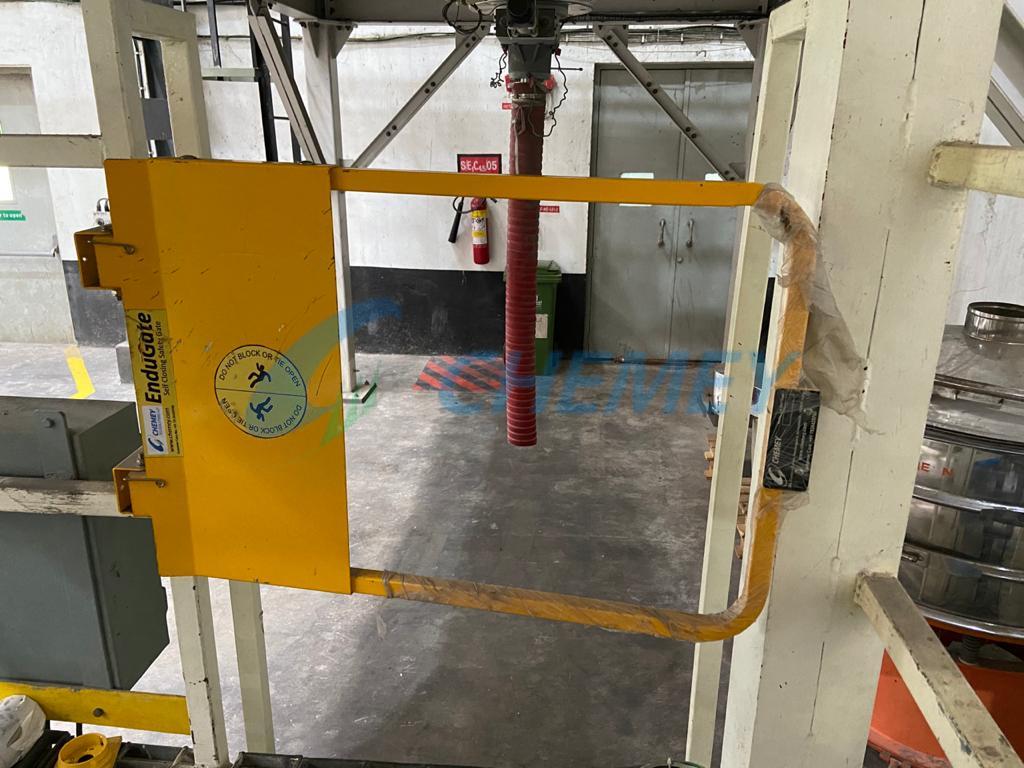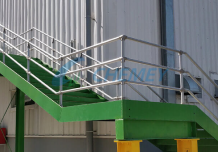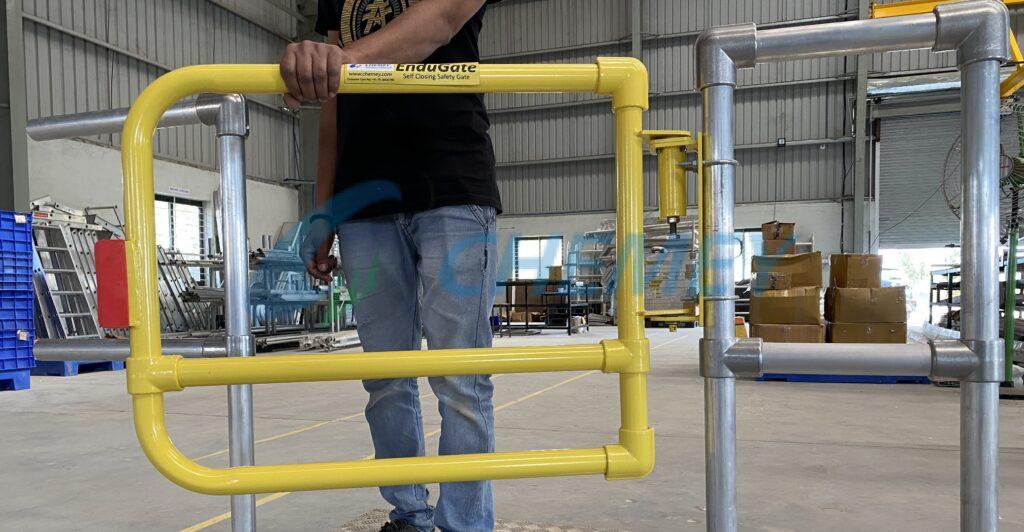What does OSHA say on the topic of safety gates? Are they required?
Industrial facilities can be dangerous places for employees to work. Fortunately, safety managers can greatly reduce these risks by taking the proper safety measures. By installing safety gates and guardrails, employers can minimize OSHA violations, minimize employee injury, and attract top-caliber employees who are committed to following safety protocol.
On jobsites, the railing is erected to protect workers from falling – on roofs, on scaffolds, on all types of elevated work areas – without any mechanism to protect those same workers at the edge or floor opening from which they are accessing that work area. Why? How can railings be effective if they don’t offer complete protection? What good does a perimeter railing do if a worker can fall through the hole in which their ladder is situated?
Safety gates have been around for a long time, but for a variety of reasons, they are often not used. Sometimes it’s a lack of planning, other times it is lack of knowledge of product availability, and other times maybe it’s cost (though, if you’re spending the money to build or purchase a rail, the addition of a gate is minimal cost-wise). Whatever the reason, workers are being left unprotected and, worse yet, being given a false sense of security.
On jobsites, the railing is erected to protect workers from falling – on roofs, on scaffolds, on all types of elevated work areas – without any mechanism to protect those same workers at the edge or floor opening from which they are accessing that work area. Why? How can railings be effective if they don’t offer complete protection? What good does a perimeter railing do if a worker can fall through the hole in which their ladder is situated?
Safety gates have been around for a long time, but for a variety of reasons, they are often not used. Sometimes it’s a lack of planning, other times it is lack of knowledge of product availability, and other times maybe it’s cost (though, if you’re spending the money to build or purchase a rail, the addition of a gate is minimal cost-wise). Whatever the reason, workers are being left unprotected and, worse yet, being given a false sense of security.

When comparing the revised OSHA standard with the previous, you’ll notice OSHA has added very specific details regarding the use of safety gates. Let’s look at the new safety gate standard, how it affects your business, how to evaluate your current safe access/fall protection configuration, and any needed modifications that help ensure you get your team home safe at the end of each day.
So what does OSHA say on the topic of safety gates? Are they required?
OSHA’s walking-working surfaces standard has been revised and published. Whether you call them swing gates, safety gates, ladder-way gates, drop bars, or chains, the new OSHA standard is in effect and it’s time to address the changes.
So what does OSHA say on the topic of safety gates? Are they required?
OSHA’s walking-working surfaces standard has been revised and published. Whether you call them swing gates, safety gates, ladder-way gates, drop bars, or chains, the new OSHA standard is in effect and it’s time to address the changes.
The newest OSHA revisions include the following criteria for OSHA 1910.29 (b): “Fall protection systems and falling object protection — criteria and practices.” The employer must ensure guardrail systems meet the following requirements:
To provide even more insight, below is a simplified list of some key areas to focus on when evaluating your current conditions. These can be used to help you determine the appropriate course of action in and around any holes, openings, or current access points with or without safety gates.
OSHA’s standard requires that a safety gate:
- (13)(i) Has a self-closing gate that slides or swings away from the hole, and is equipped with a top rail and mid-rail, or equivalent intermediate member, that meets the requirements in paragraph (b) of this section; or (13)(ii) is offset to prevent an employee from walking or falling into the hole.
- (2)(i) Mid-rails are installed at a height midway between the top edge of the guardrail system and the walking-working surface.
- (2)(iv) Other equivalent intermediate members, such as additional mid-rails and architectural panels, are installed so that the openings are not more than 48 centimeters wide.
To provide even more insight, below is a simplified list of some key areas to focus on when evaluating your current conditions. These can be used to help you determine the appropriate course of action in and around any holes, openings, or current access points with or without safety gates.
OSHA’s standard requires that a safety gate:
- Must be self-closing.
- Must either slide or swing away from the hole.
- Must be equipped with top rails and mid-rails, or equivalent intermediate members, that meet the requirements in final paragraph (b)(13)(i).
- Must have a top rail height of 1070 mm, plus/minus 75 mm.
- May not contain an opening greater than 480mm in the least dimension.
- Must be able to withstand a 90 kg load (top rail) and 68 kg load (mid-rail). So what exactly do the new revisions mean regarding the use of safety gates? What should you look for when reviewing your current safe access/fall protection configuration?



